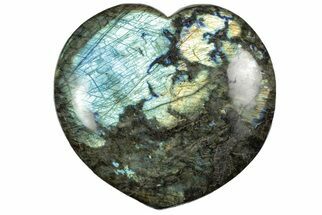LABRADORITE FOR SALE
Labradorite is an unique feldspar mineral that exhibits what is called a "schiller effect" causing a strong play of iridescent blue, green, red, orange, and yellow colors. Labradorite is so well known for these spectacular color displays that the phenomenon is known as labradorescence. Polishing Labradorite makes this labradorescence much more prominent.
136 Items
($3 to $495)
 Reviews
Reviews
































